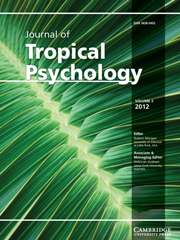No CrossRef data available.
Article contents
A New Global Dynamic – Recognising the Importance of the Tropics
Published online by Cambridge University Press: 22 September 2016
Abstract
The recent declaration of 29 June as the United Nations International Day of the Tropics recognises the critical importance of the world's tropical zone. Accounting for 42 per cent of the world's population and 55 per cent of its children, it is also the most biologically and culturally diverse region on Earth. Economic growth in the region remains high even though the Tropics carries a greater burden of disease and has poorer mortality rates than the rest of the world. This article discusses the importance of the tropical zone and reports on discussions held at the United Nations to mark the inaugural International Day of the Tropics. Now more than ever, we recognise that if the world is to achieve the 2030 Agenda for sustainable development, the countries and territories of the Tropics will be essential.
- Type
- Invited Commentary
- Information
- Copyright
- Copyright © The Author(s) 2016




